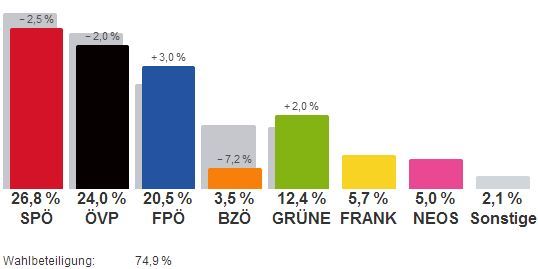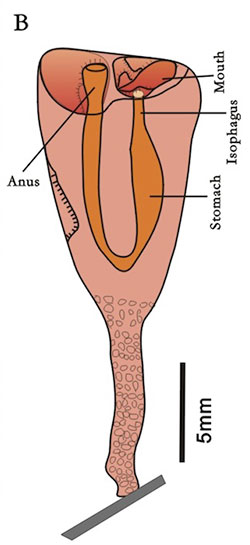There have been, in the past, a few discussions about what feminism is and why or why not one should be a feminist. I will try to lay out why I think the discussion is purely semantic and why we should all be feminists.
Part 1: The meaning of feminism
The first part we need to discuss is a definition of feminism. Wikipedia defines feminism as follows:
Feminism is a collection of movements and ideologies that share a common stated aim: to define, establish, and defend equal political, economic, cultural, and social rights for women. This includes seeking to establish equal opportunities for women in education and employment.
Note that feminism aims for equal rights, not special rights. The underlying assumption is that women currently have fewer rights in many areas. Establishing this will be the second step. For now, let’s take a look at another definition. In her HeForShe-speech, Emma Watson put it thus:
For the record, feminism by definition is: “The belief that men and women should have equal rights and opportunities. It is the theory of the political, economic and social equality of the sexes.”
This goes a step further: while one could argue that the Wikipedia definition suggests raising rights for women (while not raising those of men), Emma Watson’s definition makes it clear that both sexes should have “equal rights and opportunities”. This is an important point: in some few areas, men are at a disadvantage to women. In Austria, a woman is more than twice as likely to receive custody of a child, even if her ability to do so is in grave doubt.
Part 2: Accepting that there is a problem
Having accepted that feminism isn’t “wanting to subjugate all men” or something equally silly, we can move on to establishing that there is a problem.
Looking at only one of literally thousands of possible pieces of evidence, we find that out of 535 members of Congress (US), only 20 are women. The reasons put forward are manifold, but it seems that “family planning” plays no role here. Instead, it is thought that women doubt themselves more than men and are less likely to consider running for office. The evidence does not suggest that women are actually worse.
This undermining of women’s self-perception lies, I believe, at the heart of the issue. Sadly I can’t find the article so you’ll either have to believe me or not, but in a (New York Times?) article a few years back, an author asked women about their career choices. The overwhelming majority cited their self-perception (“I’m not good enough,” etc) as the main problem. This was (unconsciously) made worse by their mentors, who would encourage their male counterparts because they actively sought attention, while the females at the respective jobs didn’t actively search for encouragement (“If I’m good enough, I’ll be told”) and consequently didn’t feel like they were good enough.
I believe that perhaps the largest task the feminist movement faces is to encourage people to throw away their conscious and unconscious biases. We know that they exist when it comes to race. Implicit Association Tests are routinely used to seeing what sort of bias a person (or group of people) has against a different group of people. (White vs black, national vs “immigrants”, etc). To mention but one 2012 study, people were more likely to think of men in presidential terms than women.
When following instructions to sort images rapidly, the average person found it easier to pair words like “president”, “governor”, and “executive” with male names and words like “secretary”, “assistant”, and “aide” with female names. In other words, many people had great difficulty associating women with leadership.
This is powerful evidence that women are thought of as less capable and it might be part of the reason why women choose not to go into political careers. (Or scientific careers, etc.)
I could have also mentioned other pieces of evidence: rape victims by gender, pay by gender, etc, etc. It doesn’t paint a very equal picture.
Part 3: Hostile opposition on both sides
The most remarkable thing about feminism, in my opinion, is the staunch opposition to it from both men and women. I can sort of understand the male side: long-held rights and special treatment will be lost if the cause succeeds. What I can’t understand is the opposition of females.
A typical and very moderate opposition (or rather, counterargument) to feminists is typified by this picture:

The content of the picture is true. The jobs mentioned are far skewed in the “favour” of females. I say “favoured” because I mean there are more females in those jobs than males, not that those jobs are great. This is also the false imagery this picture evokes: “Feminists are fighting to get into jobs like engineering and programming even though they have such superb jobs like kindergarten teachers, nurses and flight attendants.”
This is false, and it’s trivial to prove false. In general, programming and engineering are well-paid jobs with fairly high social standing, even though the path is a difficult one. Kindergarten teachers, on the other hand, are regarded as little better than better playmates for the children of rich people. In Austria, a kindergarten teacher can be happy to make one-fifth more (≈1000€) than the absolute minimum (≈800€), below which you get help from the state. This isn’t much different in other countries. While the numbers may be wrong, salary.com lists the median annual wage of a flight attendant as ≈867,000$ and that of a kindergarten teacher as ≈853,000$ (both with little to no chance of rising through the ranks), while even an entry-level engineer can make between ≈850-64,000$, with the possibility of making ≈8100,000$+ at the end of the career.
Is it any surprise that men don’t typically want to become kindergarten teachers? Men are usually encouraged to find a job at or above their qualification, so kindergarten teachers and the like are “left over” for women. As someone working in education, I can assure you that men are welcomed with open arms in any education-related job. We are currently seven men in a team of about forty. My principal specifically wanted more men, as there were only four men in a team of forty before. Six people joined the team, three were men. How is that not fair? More than that, it is extremely unfair, considering about twenty contenders were women and only five were men.
This was but one of the many bogus objections I could have looked at.
In any case, let’s take a look at the other side:

I’m using random pictures I found on the web searching for “I don’t need feminism.” Most of the arguments are as confused as this one.
The argument isn’t that women are inherently weak. The argument is that men are (consciously or unconsciously) oppressing women in one form or another. It would have been equally wrong to claim, fifty years ago, that “I don’t need black rights because black empowerment implies that we blacks are currently weak.” No, it simply meant that white people were wielding all the power and didn’t give black people a chance to show just how strong they were.
I will only link to the next three, because they offer insight into the great misapprehensions surrounding feminism:
Person 1 claims that “feminism = not wanting men to compliment you“, which may be true for a vocal minority, but certainly isn’t true for the movement as a whole. It also ignores pretty much everything feminists fight for.
Person 2 claims that “feminism = ignoring the inequalities faced by men“, which I showed to be false in the definition.
Person 3 claims that “feminists demand entitlements instead of working for the money” even though the wage gap should be obvious to all thinking people.
Every time I see one of these “I don’t need feminism” pictures, I notice that it was feminists who achieved the rights of the women opposing feminism to do the things they now take for granted. Let’s consider this for a second: working in every job? Feminism, check. Being able to vote? Feminism, check. Being able to dress the way you like? Feminism, check.
Why are some women fighting so hard against the very movement that has achieved so much and is trying to achieve so much more for them?
Part 4: Why I am a Feminist
There are many reasons I could put forward and all of them would be valid reasons. I could let Joss Whedon speak for me. I could let this woman speak for me who rightly points out that society teaches women “Don’t get raped” instead of teaching men “Don’t rape.”
The truth of the matter is that there isn’t one big reason why I’m a feminist: there are many reasons, all of them equally important. But if I had to pick one reason, then it would be this: “I am a feminist because I support perfect equality of the sexes. Without this first step, how will we achieve equality for smaller, less vocal minorities?”






